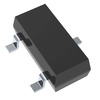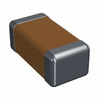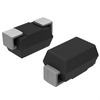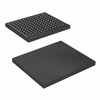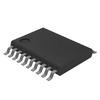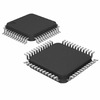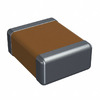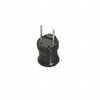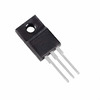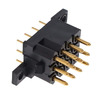Everything You Need to Know About the LPC1769 Microcontroller
The LPC1769 microcontroller is a powerful, versatile chip designed for a wide range of applications, from electronics to automation. In this article, you’ll find everything you need to know about its features, uses, and how to get started with programming it.Catalog
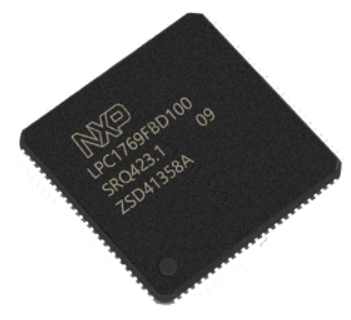
Overview of LPC1769
The LPC1769 is built on an ARM Cortex-M3 core, a design well-suited for embedded applications that demand low power and efficient processing. Operating at frequencies of up to 120 MHz, this microcontroller strikes a balance between performance and energy use. The Cortex-M3 core brings advancements like improved debugging features and enhanced integration, helping support complex applications with ease. Whether in consumer electronics, industrial automation, or small computing tasks, the LPC1769’s architecture provides a flexible foundation that can adapt to various embedded needs.
LPC1769 Pin Configuration

LPC1769 CAD Model
LPC1769 Footprint

LPC1769 3D Model
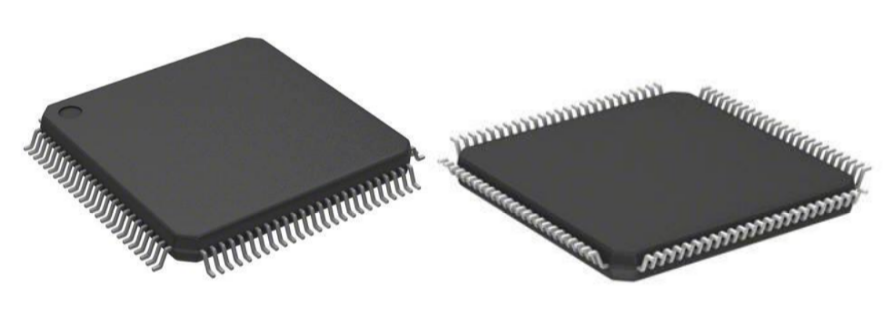
LPC1769 Specifications
Technical specifications, features, characteristics, and components with comparable specifications of NXP USA Inc. LPC1769FBD100,551
| Type | Parameter |
| Factory Lead Time | 12 Weeks |
| Mounting Type | Surface Mount |
| Package / Case | 100-LQFP |
| Surface Mount | YES |
| Data Converters | A/D 8x12b; D/A 1x10b |
| Number of I/Os | 70 |
| ROM (word) | 524288 |
| Operating Temperature | -40°C ~ 85°C TA |
| Packaging | Tray |
| Series | LPC17xx |
| Published | 2007 |
| JESD-609 Code | e3 |
| Part Status | Active |
| Moisture Sensitivity Level (MSL) | 3 (168 Hours) |
| Number of Terminations | 100 |
| ECCN Code | EAR99 |
| Terminal Finish | Tin (Sn) |
| HTS Code | 8542.31.00.01 |
| Terminal Position | QUAD |
| Terminal Form | GULL WING |
| Peak Reflow Temperature (Cel) | 260 |
| Supply Voltage | 3.3V |
| Terminal Pitch | 0.5mm |
| Time @ Peak Reflow Temperature-Max (s) | NOT SPECIFIED |
| Base Part Number | LPC1769 |
| Pin Count | 100 |
| JESD-30 Code | S-PQFP-G100 |
| Qualification Status | Not Qualified |
| Supply Voltage-Max (Vsup) | 3.6V |
| Power Supplies | 3.3V |
| Supply Voltage-Min (Vsup) | 2.4V |
| Oscillator Type | Internal |
| Speed | 120MHz |
| RAM Size | 64K x 8 |
| Voltage - Supply (Vcc/Vdd) | 2.4V ~ 3.6V |
| uPs/uCs/Peripheral ICs Type | MICROCONTROLLER, RISC |
| Core Processor | ARM® Cortex®-M3 |
| Peripherals | Brown-out Detect/Reset, DMA, I2S, Motor Control PWM, POR, PWM, WDT |
| Clock Frequency | 25MHz |
| Program Memory Type | FLASH |
| Core Size | 32-Bit |
| Program Memory Size | 512KB 512K x 8 |
| Connectivity | CANbus, Ethernet, I2C, IrDA, Microwire, SPI, SSI, UART/USART, USB OTG |
| Bit Size | 32 |
| Has ADC | YES |
| DMA Channels | YES |
| PWM Channels | YES |
| DAC Channels | YES |
| Length | 14mm |
| Height Seated (Max) | 1.6mm |
| Width | 14mm |
| RoHS Status | ROHS3 Compliant |
Features and Benefits of LPC1769
High-Performance Processor
The LPC1769 is built around an ARM Cortex-M3 processor, running at speeds of up to 120 MHz. This high-performance core lets you run applications smoothly and handle complex tasks efficiently, even in energy-sensitive environments.
Memory Protection Unit (MPU)
The integrated Memory Protection Unit (MPU) supports up to eight memory regions, helping you manage memory access. This feature is especially useful when working on applications that require a structured approach to memory use, helping to keep your programs secure and organized.
Advanced Interrupt Control
With the built-in Nested Vectored Interrupt Controller (NVIC), the LPC1769 efficiently handles multiple interrupts. This controller improves response times for your programs, allowing you to manage multiple tasks and events without delays. It’s particularly helpful for real-time applications, where quick responses are needed.
Application Areas for LPC1769
eMetering
The LPC1769 is well-suited for electronic metering applications, providing the reliability and processing power needed to manage data collection and analysis efficiently.
Alarm Systems
In alarm and security systems, the LPC1769’s capabilities allow it to handle multiple sensors and real-time monitoring, making it a dependable choice for security-focused applications.
Lighting
The microcontroller’s efficient power management and control features make it ideal for lighting systems, where it can handle various lighting controls, dimming, and automation functions.
White Goods
The LPC1769 can be used in household appliances, often referred to as white goods, where it contributes to tasks like motor control and user interface management, helping create more responsive and efficient appliances.
Industrial Networking
For industrial networking, the LPC1769’s processing speed and connectivity options allow it to support communication protocols and manage data across devices, making it useful in connected industrial environments.
Motor Control
In motor control applications, the LPC1769 provides precise control over motors, making it suitable for robotics, automation, and other systems that rely on accurate motor performance.
LPC1769 Application Circuit
For applications where the LPC1769 connects to a USB device, managing the voltage on the VBUS pin is important to ensure safe operation. The maximum voltage allowed on the VBUS pin is 3.6V, so one way to keep it within this limit is by using a voltage divider. This voltage divider adjusts the voltage from the USB connector to a level that works well for the microcontroller.
The voltage divider should be set so that the VBUS pin reads above 0.7 times the VDD voltage to show a logic HIGH but still stays under the 3.6V maximum. Here’s an example setup:
VBUS maximum voltage: 5.25V
VDD: 3.6V
To bring this down, you’ll want a divider that reduces the voltage to around 0.686 of its original level, which aligns it to the limits for proper operation. This setup helps the LPC1769 run smoothly and safely in USB applications.

Programming Guide for LPC1769
Getting Started with ARM Cortex M3
To begin programming with the LPC1769, you’ll need an understanding of the ARM Cortex M3 architecture, which offers a blend of performance and power efficiency. Familiarize yourself with its basic structure and functions to make the most of your programming experience.
Setting Up the Programming and Debugging Environment
Setting up a suitable environment is the first step. Using an Integrated Development Environment (IDE) like Keil MDK provides the tools necessary to write, compile, and debug your code. Ensure that all necessary software and drivers are installed for smooth operation.
Installing the Driver for CoLinkEx
For proper debugging, install the CoLinkEx driver, which allows your computer to communicate effectively with the LPC1769. This setup enables real-time debugging, helping you address issues as they arise.
Integrating the Plugin with Keil MDK
To streamline your workflow, integrate any required plugins with Keil MDK. This integration allows you to leverage additional features in the IDE, enhancing your coding and debugging process.
Register Configuration (lpc17xx.h)
The lpc17xx.h header file contains definitions and configurations specific to the LPC17xx series. Including this file in your project provides you with access to important register configurations, making it easier to manage input/output operations and system settings.
Creating a Project in Keil uVision4 for LPC1769
Using Keil uVision4, you can create a dedicated project for the LPC1769. This setup will serve as the foundation of your code, allowing you to organize and manage files related to your program efficiently.
Configuring GPIO Pins with PINSEL
The PINSEL register allows you to select and configure GPIO pins based on your project needs. With PINSEL, you can easily assign specific functions to each pin, helping control the microcontroller’s connections.
Setting Up GPIO Direction with FIODIR
The FIODIR register controls the direction of each GPIO pin. Using FIODIR, you can specify whether a pin functions as an input or output, a critical step in defining how your program interacts with the external environment.
Package Outlines for LPC1769
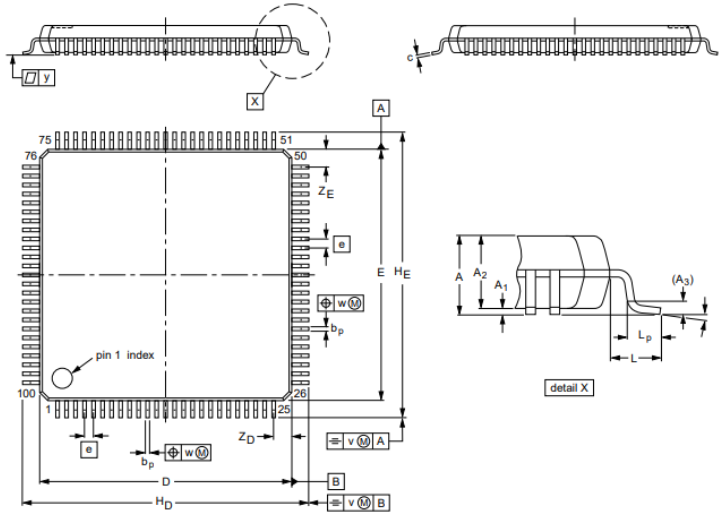
Manufacturer of LPC1769
NXP Semiconductors, headquartered in Eindhoven, Netherlands, is the manufacturer behind the LPC1769. Known for its focus on the automotive and secure connectivity markets, NXP supports a wide range of applications in industries worldwide. With about 31,000 employees across 35 countries and a strong engineering presence, NXP continually develops products that meet modern electronic needs, from everyday consumer devices to specialized industrial applications. The LPC1769 reflects NXP’s commitment to delivering microcontrollers that are versatile, reliable, and widely applicable across technology sectors.
Parts with Similar Specifications to LPC1769
The parts on the right have specifications similar to the NXP USA Inc. LPC1769FBD100,551
| Type | LPC1769FBD100,551 | LPC4078FBD100E | LPC1765FBD100,551 | LPC1763FBD100,551 |
| Manufacturer | NXP USA Inc. | NXP USA Inc. | NXP USA Inc. | NXP USA Inc. |
| Package / Case | 100-LQFP | 100-LQFP | 100-LQFP | 100-LQFP |
| Supply Voltage | 3.3 V | 3.3 V | 3.3 V | - |
| Core Size | 32-Bit | 32-Bit | 32-Bit | 32-Bit |
| Program Memory Type | FLASH | FLASH | FLASH | FLASH |
| Time @ Peak Reflow Temp | NOT SPECIFIED | NOT SPECIFIED | NOT SPECIFIED | NOT SPECIFIED |
| Pin Count | 100 | 100 | 100 | 100 |
| Operating Temperature | -40°C ~ 85°C (TA) | -40°C ~ 85°C (TA) | -40°C ~ 85°C (TA) | -40°C ~ 85°C (TA) |
| Packaging | Tray | Tray | Tray | Tray |
About us
ALLELCO LIMITED
Read more
Quick inquiry
Please send an inquiry, we will respond immediately.
Frequently Asked Questions [FAQ]
1. What is the LPC1769 used for?
The LPC1769 is an ARM Cortex-M3-based microcontroller designed for embedded applications. It is ideal for projects that need reliable, low-power processing, like those found in consumer electronics, industrial automation, and home appliances. Its efficient architecture and flexible features make it suitable for a range of applications that demand consistent performance.
2. How is the LPC1769 different from the LPC1768?
The main difference between the LPC1769 and the LPC1768 is their operating speed. The LPC1769 can run at up to 120 MHz, while the LPC1768 operates at up to 100 MHz. This difference in speed makes the LPC1769 a better option for applications that benefit from faster processing.
3. How does the LPC1769 connect to GPRS equipment?
To connect the LPC1769 to GPRS equipment, you need to power the GPRS module correctly and connect it through the appropriate input/output (I/O) pins on the LPC1769. By configuring these pins in the software, you can control the GPRS module to handle communication functions as needed.
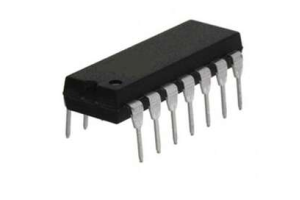
Integrating MC1413 in Electronic Projects
on November 14th
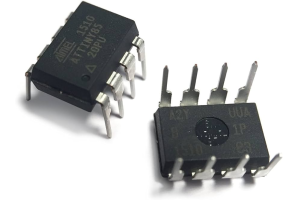
Everything You Need to Know About ATTINY85 Microcontroller
on November 14th
Popular Posts
-

What is GND in the circuit?
on January 1th 3213
-

RJ-45 Connector Guide: RJ-45 Connector Color Codes, Wiring Schemes, R-J45 Applications, RJ-45 Datasheets
on January 1th 2777
-

Understanding Power Supply Voltages in Electronics VCC, VDD, VEE, VSS, and GND
on November 18th 2504
-

Fiber Connector Types: SC Vs LC And LC Vs MTP
on January 1th 2228
-

Comparison Between DB9 and RS232
on January 1th 1849
-

What Is An LR44 Battery?
Electricity, that ubiquitous force, quietly permeates every aspect of our daily lives, from trivial gadgets to life-threatening medical equipment, it plays a silent role. However, truly grasping this energy, especially how to store and efficiently output it, is no easy task. It is against this background that this article will focus on a type of coin cell battery that may seem insignificant on the...on January 1th 1822
-

Understanding the Fundamentals:Inductance Resistance, andCapacitance
In the intricate dance of electrical engineering, a trio of fundamental elements takes center stage: inductance, resistance, and capacitance. Each bears unique traits that dictate the dynamic rhythms of electronic circuits. Here, we embark on a journey to decipher the complexities of these components, to uncover their distinct roles and practical uses within the vast electrical orchestra. Inductan...on January 1th 1776
-

CR2430 Battery Comprehensive Guide: Specifications, Applications and Comparison to CR2032 Batteries
What is CR2430 battery ?Benefits of CR2430 BatteriesNormCR2430 Battery ApplicationsCR2430 EquivalentCR2430 VS CR2032Battery CR2430 SizeWhat to look for when buying the CR2430 and equivalentsData Sheet PDFFrequently Asked Questions Batteries are the heart of small electronic devices. Among the many types available, coin cells play a crucial role, commonly found in calculators, remote controls, and ...on January 1th 1756
-

What Is RF and Why Do We Use It?
Radio Frequency (RF) technology is a key part of modern wireless communication, enabling data transmission over long distances without physical connections. This article delves into the basics of RF, explaining how electromagnetic radiation (EMR) makes RF communication possible. We will explore the principles of EMR, the creation and control of RF signals, and their wide-ranging uses. The article ...on January 1th 1744
-

Comprehensive guide to hFE in transistors
Transistors are crucial components in modern electronic devices, enabling signal amplification and control. This article delves into the knowledge surrounding hFE, including how to select a transistor's hFE value, how to find hFE, and the gain of different types of transistors. Through our exploration of hFE, we gain a deeper understanding of how transistors work and their role in electronic circu...on November 18th 1731






